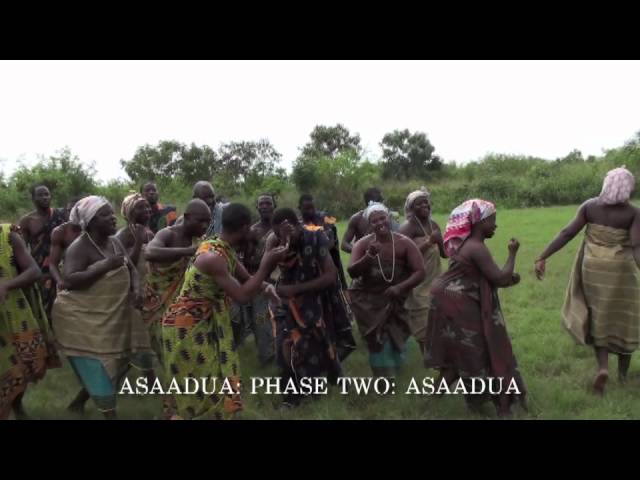Asaadua Dance is a vibrant and joyful recreational dance music that originated among the Akan people of Ghana. Its name is derived from the Asaa tree, which is known for its sweet fruits and is commonly found in the forest regions of Ghana. The dance’s name reflects the gay and pleasant nature of the dance, as it is meant to be an enjoyable and pleasurable experience for all who participate.
This Akan dance is particularly popular in the Ashanti and Brong Ahafo regions of Ghana, and it features seven basic instrumental parts. These include the iron double bell known as the nnawuta, the hollow boat-shaped iron bell called the kete dawuro, the metal castanet known as frikviwa, the hollow gourd rattle with beads inside called the ntrowa, and three tamalin frame drums of high, medium, and low pitch.
The nnawuta, which is also known as the gankogui among the Ewe people, is played with a wooden stick and produces both high and low tones. The dawuro, which is called toke among the Ewe, is struck with a metal rod and produces both open and muted sounds. The mute sounds are created by pressing the rod against the dawuro’s surface after a stroke, in the same manner as drum mute sounds.
The frikyiwa is held in the hand and played with a circular metal ring, emitting a sharp and clear tone. The ntrowa, which is also held in the hand and played with a circular motion by rotating the wrist, has a softer sound than the axatse gourd rattle, which employs netted beads around its external surface.
Finally, the tamalin consists of a rectangular wooden frame across which is stretched a gut head, with the large drum producing a lower pitch than the small drum. Each tamalin is struck with one hand and played with the other, and open resonant and closed or muted tones are sounded for each drum. Muted tones are higher in pitch than open tones.
Asaadua is not just a dance but a way of life for the Akan people. It is often performed at community events, festivals, and other celebrations, and it is a reflection of the people’s cultural identity and heritage. The dance and its accompanying music continue to thrive in Ghana and around the world, providing a source of joy and inspiration for all who experience it.






































